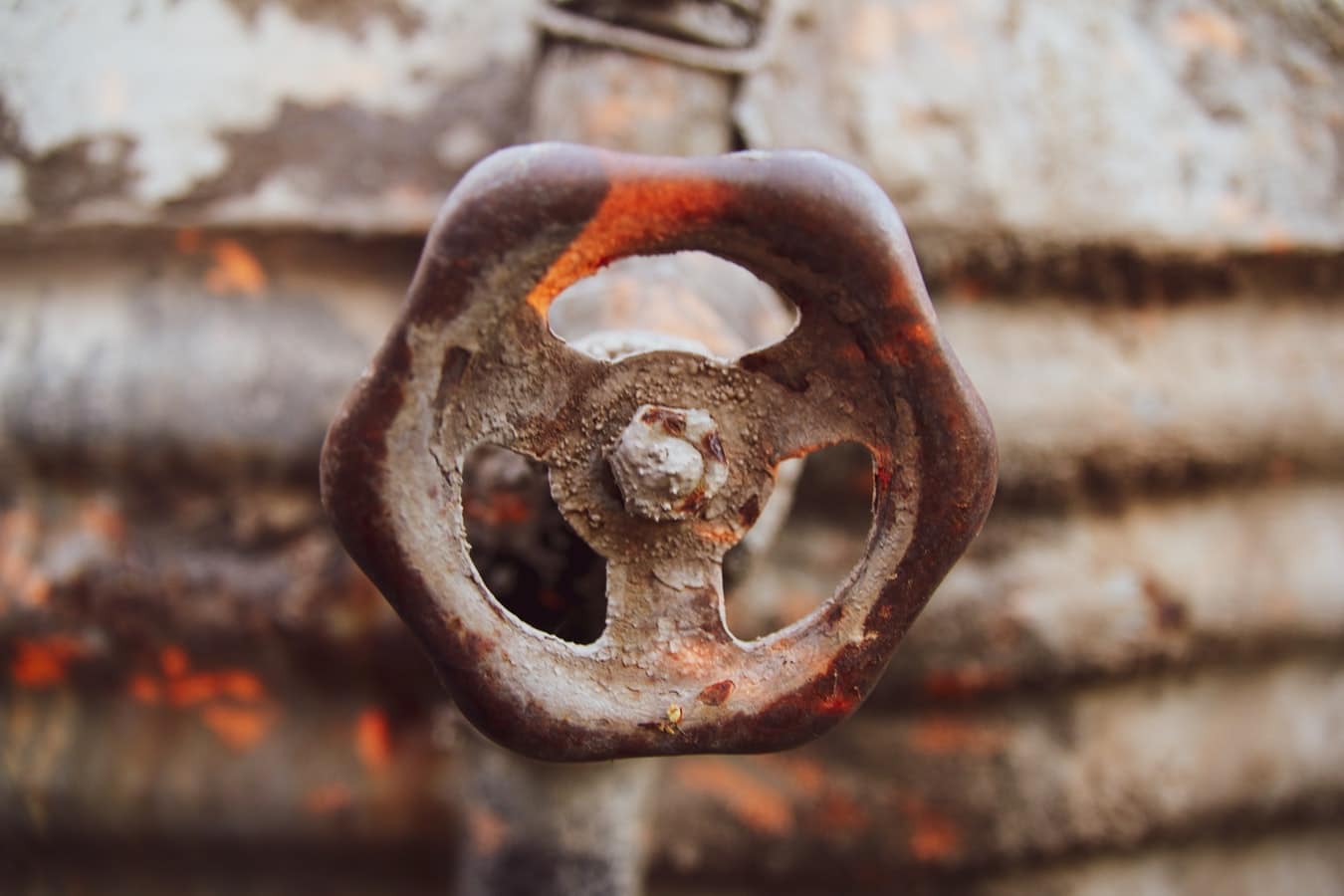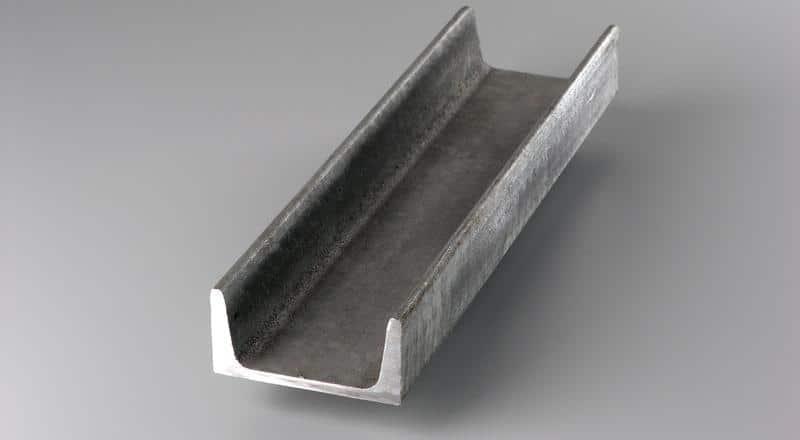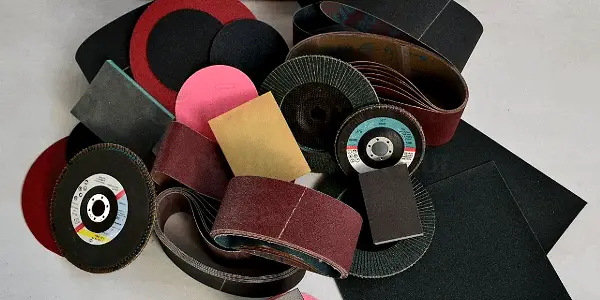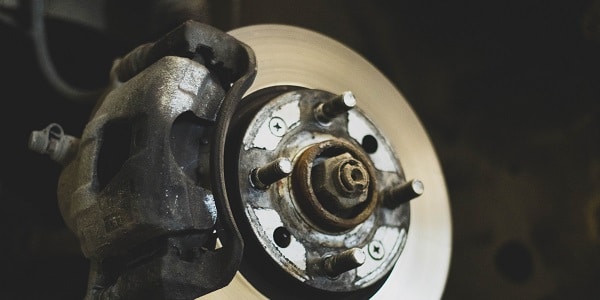If you’ve ever left a metal item outside in the rain, you’ve probably already witnessed the speed of iron oxide. Consumer-grade steel and other iron-rich metals are capable of developing rust (iron oxide) after just four to five days of exposure.
Of course, there are plenty of factors that have the potential to skew the rate of rust formation. For starters, different grades of steel rust at different speeds. Steels with greater amounts of ferric (iron) rust faster than those without. Check out this article for a more in-depth look at the impact of alloy concentrations on rust development.
The method in which a metal is maintained (i.e. cleaned, finished) also has an impact on the rate of rust formation. The same goes for contaminants, including pH levels, salts, and oxidants. There are so many factors that increase the rate of corrosion. Even the temperature and atmospheric pressure influence iron oxide development.
It’s easy for one to get caught up in the complexities of iron oxide. So, while it is quite common for people to see evidence of iron oxidation after just a few days, there is no simple, one-size-fits-all answer to the question, ‘How long does it take metal to rust?’

The Rate of Rust Formation
Rust is an electrochemical reaction that takes place when iron is exposed to oxidizing agents. While oxygen is the catalyst, there are plenty of additional elements that can accelerate or retard the development of rust. These include but are not limited to:
- Oxygen
- Water
- Electrolytes
- Acids
- Alkalines
- Heat
Scientists use balanced chemical reactions to calculate the rusting of iron. For example, the first step in iron oxidation reads like this: Fe(s) → Fe2+(aq) + 2e-.
Metal experts like those at the American Galvanizers Association use those equations to identify a metal’s corrosion rate. Those same rates are used to identify the rate of iron oxide develops in specific environments. Architects, builders, and designers use those rates to ensure that they are using the ideal metal.
Corrosion Rates
Are you wondering how to measure the corrosion rates within your microenvironment? Years ago, scientists would have to remove actual pieces of metal from pipelines and other metal structures to determine the localized rate of corrosion. Now, they can use electronic radar to scope out what’s happening within enclosed structures. It’s unlikely that you are going to have to calculate the actual corrosion rate in your environment. Less, of course, you are an engineer.
There are always going to be uncertainties, including:
- Time of wetness
- Atmosphere pollution (sulphates, chlorides, electrolytes, dust, etc.)
- Sulphates (presence of oil or other sulfur-rich substances)
- Chlorides (these are present in most marine environments)
Corrosivity Categories
Check out this Steel Construction’s corrosivity graph to see the different corrosivity categories (C1, C2, etc.) and examples of where these conditions exist in interior and exterior environments. As you can see, the environment inside a heated building is going to be less corrosive (≤ 1.3 low-carbon thickness loss per year) than buildings located in coastal areas with high humidity and high salinity (these experience as much as > 80 to 200 low-carbon thickness loss per year). These are the types of things that engineers and architects need to consider when selecting alloys for projects.
How to Make Metal Rust
As you now know, rust is nothing more than a chemical reaction. With the proper catalysts, you can create rust. That’s right; iron oxide is a highly sought-after metal patina.
Below you’ll find the instructions for how to rust metal quickly. Check out this YouTube video to see the process in action.
What You’ll Need:
- Raw steel
- Gloves
- Commerical degreaser
- Rags
- Dropcloth (moisture-resitant
- Two spray bottles (preferably ones with measurement markers)
- HYdrogen peroxide
- White Vinegar
- Salt
- Clear acrylic primer
- Fine-grit sandpaper or an all-purpose sanding block
Step 1: Prep Your Work Space
First, you need to set up your space. You’re going to want a large, flat surface where you can set the metal object(s) you will be rusting. Depending on the surface of your worktable, you may wish to cover it with a protective drop cloth.
Step 2: Prepare the Metal
Use a commercial degreaser (see your options here) to scrub down your metal object. A clean, debris-free surface rusts faster and more efficiently than a dirty one. Wipe the item down before moving on to the next step.
Step 3: Mix Your Solutions
For this next step, you’re going to fill each spray bottle with a designated solution. Fill the first bottle with white vinegar. Add two cups of hydrogen peroxide, four tablespoons of white vinegar, and one tablespoon of salt to the second spray bottle. Many spray bottles have measurement markers that eliminate the need for a measuring cup. You may use a funnel to transfer all three ingredients into the spray bottle. Once the ingredients are fully incorporated, cap the spray bottle. Use a Sharpie or small piece of painter’s tape to mark the bottle. Shake the bottle until all of the ingredients are mixed and the salt is fully dissolved.
Step 3: Spray the Metal with the Vinegar Solution
Now, spray your metal item until it is coated in white vinegar. Place the object in a sunny, well-ventilated area (ideally outside). Wait for it to dry completely before moving on to the next step. You may notice some preliminary signs of rust, but you’re far from finished. The real magic happens when you apply your second solution.
Step 4: Spray the Metal with the Second Solution
Now, spritz the object with your second solution, or the one consisting of hydrogen peroxide, white vinegar, and salt. You may notice that the solution fizzes a bit upon contact. This is the hydrogen peroxide reacting to the iron and acid. Set the object in a sunny, well-ventilated area, and wait for it to dry.
Step 5: Repeat
As Bob Vila specifies, you can apply a rusting solution up to four times or until you can create your desired patina. Don’t overdo it, though. Excess rust could damage the structural integrity of the metal.
Step 6: Seal
Once you’ve developed your desired patina, you need to seal it in. Spray the object with an acrylic sealer like the ones seen here, and allow it to cure. The acrylic sealer will prevent your hand-rusted object from rubbing off on and staining nearby objects. Depending on the properties of the sealer you use, it may also be able to stop the object from deteriorating even further.
Expert Tip: Use painter’s tape or stick-on stencils to create a distinct rust pattern on your metal. This techque is often used duringthe creation of faux vintage signs and other decorative pieces.
Rusting Zinc-Coated or Galvanized Metal

It’s easy to rust raw metal, but what can one do to rust galvanized or coated metal? We’ll show you! While we’ve got your attention, check out this instructional video. Don’t worry. It’s totally possible. It just takes a little extra ingenuity and elbow-grease.
What You Need:
- ScotchBrite Pad or steel wool
- Dish soap
- Gloves
- Water
- Container
- Toilet Bowl Cleaner
- Applcator (brush, steel wool, or rag)
Step 1: Prep the Metal
Step up your workspace in an outdoor or well-ventilated area. Don some rubber gloves, as toilet bowl cleaner is highly acidic.
Use a ScotchBright pad, soap, and water to scour the surface of your metal. Your patina will develop much more evenly and effectively on a clean surface.
Step 3: Coat the Metal in Toilet Bowl Cleaner
Next, apply your toilet bowl cleaner to the metal. Spread the toilet bowl cleaner onto your metal using your desired applicator. Let the metal sit for 20 to 30 minutes. Wipe the cleaner away. Repeat these steps until you have created your desired level of corrosion.
Step 4: Seal in Your Results
Use a clear acrylic spray to seal in your result. If you plan on placing the metal in an exposed area, you should opt for a rust inhibitor instead. promises up to one year of corrosion resistance in outdoor environments. Rust-Oleum’s High Performance Rust Preventative Spray is a similar rust preventative.
Expert Tip: Use scrap metal to experiment with different catalysts and applicators. You should be able to combine different elements to create distinct patinas.
How Long Does It Take Metal to Rust (Iron)
It takes iron about four to six months to rust. However, the exact time it takes for iron to rust varies depending on the environmental conditions. The more humid and salty the air is, the faster Iron will rust.
There are a number of ways to prevent iron from rusting. One way is to coat the metal with a layer of paint or another sealant. This will create a barrier between the air and the metal and will slow down the process of rusting. Another way to prevent iron from rusting is to keep it dry. If you live in an area with high humidity, you can try using a dehumidifier in your home. Finally, you can also try storing iron in a cool, dry place.
There are a number of metals that are resistant to rusting. Some of these metals include stainless steel, aluminum, and copper. Rust is less likely to form on these metals because they form an oxide layer that protects them from the air and moisture.
Preserving Raw or Rusted Steel and Iron
Rust is a gorgeous natural patina. If you want to maintain the look of your raw or rusted steel and iron surfaces without infringing upon their structural integrity, you’re going to have done a bit of work to preserve the iron oxide. Penetrol is one product that is popular with rust enthusiasts and DIYers. It stabilizes rust so that it does go too far or start to flake off. Check out this Instructable guide to see how to apply Penetrol to rusted metal.
Keep in mind that Penetrol is an oil-based sealant. Another option is to use an industrial-strength polyurethane coating, such as Rust-Oleum’s Ultimate Polyurethane. Take care to preserve your iron oxide and you’ll be able to enjoy its natural reddish-brown patina for years to come!
How long does it take for rust to eat through metal?
The time it takes for rust to eat through metal varies depending on the type of metal and the environmental conditions. In general, it takes longer for heavier metals, such as iron and steel, to rust. Rust is also more likely to form in humid or salty environments. The exact time it takes for rust to eat through metal will also depend on the thickness of the metal. Heavier metals with thicker layers will take longer to rust.
You can prevent rust from forming on metal by coating it with a layer of paint or another sealant. This will create a barrier between the air and the metal and will slow down the process of rusting. Another way to prevent rust is to keep the metal dry. If you live in an area with high humidity, you can try using a dehumidifier in your home. Finally, you can also try storing metal in a cool, dry place.
How Environment Plays a Role
We know that the environment plays a huge role in the development of iron oxide (rust). Take automobile rust as an example. When cars are exposed to moisture and oxygen, they become suseptable to rust. Areas with high humidity or greater than average precipitation are far more suseptable to rust. Adding to that is the fact that cars and trucks also come in contact with salt. When salt comes in contact with water, it acts as an electrolyte. As a result, the development of iron oxide is further accelerated. Ask any automobile owner in New England, and they’ll be willing to corroborate this fact.
There are thousands of different environmental factors that have the potential to accelerate the developmental rate of rust. As such, metal experts have broken metal applications into the following four categories:
- Atmospheric
- Soil
- Marine
- Pipeline
We know that regular caron steel rusts in environments with 70% to 80% humidity and temperatures are greater than 32 degrees Fahrenheit (freezing). So long as the conditions prove to be beneficial to iron oxide, other factors can play into the rate at which any subsequent rust develops.
There may be impurities in the water or air that cause rust to develop at an increased speed. These impurities include but are not limited to salts, chlorides, chemical contaminants, or other acids. Contaminants can come in solid, gaseous, or liquid forms.
Some environmental conditions are so harsh that even the most rust-resistant metals at-risk for developing iron oxide. Some of the most rust-susceptible areas are pipelines. Not far behind that, there are boats, docks, and other items that are subjected to perpetual ocean or freshwater exposure. Items that come in contact with soil are also at an increased risk of corrosion. However, soil corrosiveness varies dramatically and is largely dependent on the presence of specific minerals and contaminants.
Stopping Rust
When architects and engineers select alloys for their projects, they have to forecast how that metal is going to interact with its environment. They may use a metal’s corrosive rate to determine if it is a good match for a particular application.
Galvanized metal (which is coated in rust-resistant zinc), stainless steel, and titanium are often used because of their ability to resist iron oxide. Other metals, including aluminum brass, bronze, copper, gold, and other metals, do not contain enough iron to rust. With that said, they may still develop some sort of patina. However, the patina will not infringe upon the structural integrity of the metal.
People may also use rust inhibitors to modify an otherwise corrosive metal. Consumers may use products such as Rust-Oleum’s Rusty Metal Primer and Rust Reformer to inhibit corrosion on items with preexisting iron oxide. There are plenty of other rust inhibitors used to protect items in specific environments. Some popular rust-inhibiting additives include zinc phosphate and volatile amines (a mixed inhibitor). MEtal can also under galvanization at the industrial level. Galvanization is the process of coating iron and steel with zinc (a natural inhibitor).
Frequently Asked Questions
Can rust form overnight?
Rust can form overnight, but it depends on the environmental conditions. If the air is humid and there is moisture present, rust can form very quickly. However, if the air is dry, it may take longer for rust to form. The type of metal also affects how quickly rust can form. Heavier metals, such as iron and steel, tend to rust more quickly than lighter metals.
You can prevent rust from forming by coating the metal with a layer of paint or another sealant. This will create a barrier between the air and the metal, and will slow down the process of rusting. Another way to prevent rust is to keep the metal dry. If you live in an area with high humidity, you can try using a dehumidifier in your home. Finally, you can also try storing metal in a cool, dry place.
How long does it take an iron nail exposed to the rain to rust?
It can take an iron nail exposed to the rain anywhere from a few hours to a few days to rust. The amount of time it takes for the nail to rust will depend on the type of metal, the environmental conditions, and the thickness of the metal. Heavier metals with thicker layers will take longer to rust.
You can prevent rust from forming by coating the metal with a layer of paint or another sealant. This will create a barrier between the air and the metal, and will slow down the process of rusting. Another way to prevent rust is to keep the metal dry. If you live in an area with high humidity, you can try using a dehumidifier in your home. Finally, you can also try storing metal in a cool, dry place.
Does tin rust?
Tin does not rust, but it can corrode. Tin is a metal that is resistant to corrosion. This means that it does not easily react with the air or moisture to form rust. However, tin can still corrode if it is exposed to certain chemicals, such as acids.
How fast does rust spread
Rust typically spreads quickly in damp, humid environments. However, it can also spread slowly in dry conditions. The speed at which rust spreads depends on many factors, including the type of metal affected, the amount of oxygen and moisture present, and the temperature. In general, warmer temperatures and higher humidity levels will cause rust to spread more quickly.
How long does it take stainless steel to rust
Stainless steel is a type of metal that is more resistant to rusting than other types of metals. However, it is not completely immune to rusting. The amount of time it takes for stainless steel to rust will depend on the factors mentioned above, as well as the quality of the stainless steel. For example, higher-quality stainless steel is less likely to rust than lower-quality stainless steel. In general, though, it can take anywhere from a few days to a few years for stainless steel to rust.
How to make metal rust resistant
There are a few ways to make metal rust resistant. One way is to coat the metal with a substance that prevents oxygen and moisture from coming into contact with the metal. Another way is to alloy the metal with another element that makes it more resistant to rusting. Finally, some metals are simply more resistant to rusting than others. For example, stainless steel is a type of metal that is naturally resistant to rusting.
How is rust formed
Rust is typically formed when iron or steel comes into contact with oxygen and moisture. This can happen through a process called oxidation, which occurs when the metal is exposed to air. Rust can also be formed by chemical reactions between the metal and water, such as when water containing chlorine comes into contact with iron. In general, though, rust is most commonly formed by the interaction of iron or steel with oxygen and moisture.
How to make metal rust
There are a few ways to make metal rust. One way is to expose the metal to oxygen and moisture. This can be done by simply leaving the metal out in the open air. Another way is to use a chemical reaction to create rust. For example, you can mix iron oxide with water to create a solution that will cause iron to rust. Finally, you can use an electrical current to cause metals like iron and steel to rust.
How long does it take for metal to rust underwater
The amount of time it takes for metal to rust underwater will depend on the factors mentioned above, as well as the quality of the metal. In general, though, it can take anywhere from a few days to a few years for metal to rust underwater.
Wrapping Up
So much of the world we live in is made of metal. From the buildings we dwell into the tools we use to build those structures, metal is an indispensable material. It goes without saying that rust is one of the biggest dangers posed to metal. When we work to understand how rust develops and what accelerates its development, we can take better care of our metal. Moreover, we can learn to embrace rust as a natural patina without letting it interfere with the structural integrity of the objects it embraces.
We hope you found this rust-centric article to be interesting and informative. As always, we look forward to hearing your thoughts on the subject.



Leave a Reply